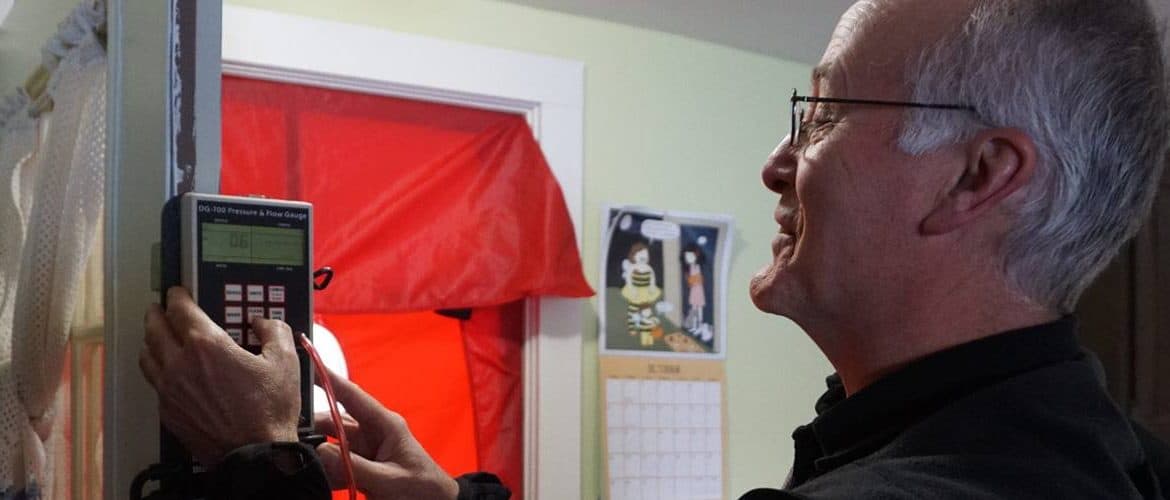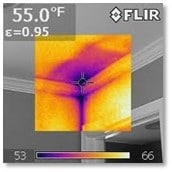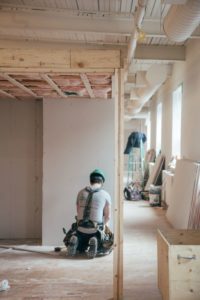There are many ways you’re losing heat in your house. Whether it’s through doors, windows, walls, and even your roof. On average, a home can lose up to 30% of its heat through windows that don’t fit into their casings or have gaps in the areas around the window frames. Your windows can be one source of heat loss but there are other places that our HEAT Squad can help you identify. To give you a little bit of an idea of where you might be losing heat and how you can prevent heat loss, read on:
Thermal Envelope
Around 25% of heat made by your boiler, furnace, or other heat sources will escape through your roof. About 35% escapes through your walls and gaps around your windows and doors. Lastly, around 10% is lost through your floors. All together, the walls, doors, windows, roof, and floor of your home create what is called the “thermal envelope.” This “thermal envelope” is what is supposed to prevent heat escaping from the interior of your home to the exterior in the colder months and vice versa in the hotter months. Modern homes are usually built tightly so heat escaping doesn’t happen. So how do older homes fix this?
Windows
Things to know:
- If you upgrade to energy efficient windows you can save up to 15% on your energy bill per year.
- You can save approximately $465 a year by switching/upgrading to energy efficient windows.
- If you choose high quality windows and have a professional install your windows you can save around 25% to 52% on your energy bill.
- Investing $10,000 into new windows can save you 40% on your $3000 or $1200 bill. It also enhances the value and beauty of your home.
- Making sure the insulation around your windows/window casing is efficient is one of the main ways to cut heat loss.
As you already have read, lots of your heat is lost through the area around your windows (it’s not always the window itself but the casing around it). Draft reducing is usually overlooked but can save you the most in terms of heat loss. Draft proofing can be done on doors, loft hatches, and floorboards too.
Roof
Installing insulation in the attic area of your roof is one of the best ways to retain heat in your home. It typically costs between $1.50 and $4.00 per foot to insulate an attic, depending on the quality of material you choose. Blown-in insulation is the least expensive and is often ideal for older homes or smaller attic spaces. Spray foam insulation, while more expensive, is the best for new construction and can also help with noise reduction. There are lots of options and our Home Repair Coordinator can help you!
Walls
There are usually only two types of walls, solid and cavity. Buildings built back in the 1930s often have solid walls but anything built after that will most likely have cavity walls. What is the difference between cavity and solid walls? Insulating your walls is important, as it is the cause of most your heat loss. Make sure you have it done professionally or, if you do it yourself, make sure it is done correctly.
Cavity walls: These walls are easier to insulate. The walls can be injected with insulating material, this slows the movement of heat. It is very affordable and can be done multiple times.
Solid walls: If you have this type of wall in your home, it is harder to insulate. Since there isn’t a gap, you have to insulate either externally or internally and can be expensive to do.
Floors
Everyone can admit, standing on cold floors in winter stinks, but, can be stopped! If you insulate your floors, it will stop the heat from escaping. If you’re looking to do more than insulating, you can consider installing underfloor heating. How you insulate your floors will depend upon your house construction (think suspended timber floors vs. solid concrete flooring) and what your budget may be. Insulating most floors is a somewhat easy process and there are a number of products and ways to help prevent heat transfer between upper and lower levels of your home.
There are many ways to decrease the loss of heat in your home. If you are considering investing in any home repair projects to help keep your home cozy (or cool in the summer), consider working with NeighborWorks of Western Vermont to look at options or services that could help you. We also offer home repair loans that could give you a leg up when deciding to do some home repair projects that, in the long run, will help you save on your heating and cooling costs.
Author: Bailey Aines, NeighborWorks of Western Vermont part-time employee








